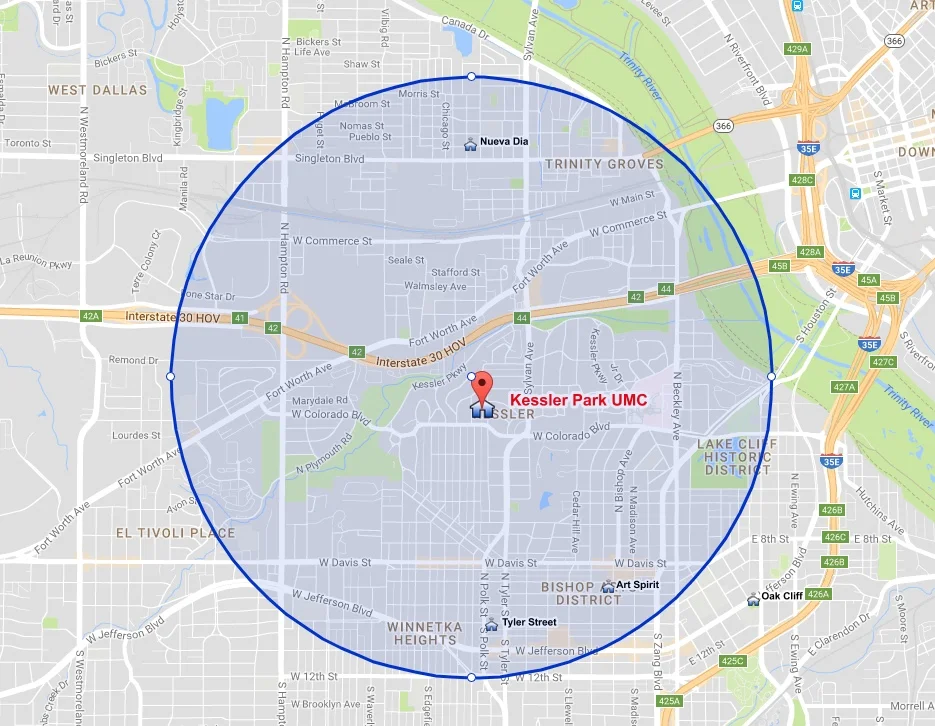The Religious Preferences of Our Parish
/I’m still combing through the results of the demographic study provided by MissionInsite for United Methodist churches in the North Texas Conference.
Last week, I wrote about some of the stark numbers and facts about the people living around us. But this week, I would like to muse on what the study discovered about our neighbors’ thoughts about religion and church. (Remember, the study looked at the people who live within a 1.5 mile radius of our church.)
Regarding involvement in church, the percentage of people who consider themselves part of a faith community stands at 35.3%, which is higher than I expected. However, that number has dropped over 12 percentage points in the last ten years. That means over 47% of the population were involved in a church in 2007. That’s a huge drop in a short amount of time.
The only two categories of faith community which have grown considerably in those ten years are the “Nones,” or those who say they have no affiliation with any faith community, who make up 27.3% of the population, and those in non-denominational or independent churches, which make up 6.6%. The biggest declines were amassed by the Catholics, who are still the largest single denomination in our area, and the Baptists, the second largest. We United Methodists mostly held our own during this time, declining by only .6% in that time period.
When people who are not part of any church are asked why they don’t participate, here are their top five reasons:
1. Religious people are too judgmental
2. Don’t trust organized religion
3. Religion too focused on money
4. Disillusionment with religion
5. Don’t trust religious leaders
Let’s stop right there and think about the implications of these findings. This tells me that there are a lot of people out there who have been hurt by church, who have been abused, manipulated, or denigrated by people claiming to be Christians. Our neighbors have some deeply-felt pain, and much of it is our fault.
As I said several times in my sermon on Sunday, our Bible has been hijacked. It has become a weapon in the hands of some, and the consequences are that some people have been beaten up, wounded, and bruised.
This should be a wake-up call for us. Fifty years ago, the culture around us was sympathetic to the church. Pastors were seen as civic leaders; Sunday mornings were sacred time, as well as Wednesday evenings; and people kept up a veneer of religiosity in the community. But that’s not the way it is anymore.
The study recommended, in a context such as ours, the following top five ministry or program preferences:
1. Warm and friendly encounters
2. Quality of sermons
3. Adult social activities
4. Opportunities for volunteering in the community
5. Holiday programs and activities
Another interesting discovery was that traditional worship ranked #7 in this list, higher than contemporary worship, which came in at #17.
Looking carefully at this list, I believe that KPUMC is uniquely positioned to prosper in this community. Though I can’t speak to #2, I think we do quite well on these top five priorities, with the exception of #3. We still lack in the number of quality adult social activities that we offer, but I believe the Vision Task Force has given us a way to improve in this area.
Ultimately, however, the study fails to identify what is most important about a church, and what a church represents. One of the categories ranked “Life Concerns” for people in our community. Answers included such concerns as “losing weight/diet issues,” “day-to-day financial matters,” and “being successful.” Nowhere did I see the choice, “becoming a disciple of Jesus Christ.”
The one thing that KPUMC has to offer that makes us different from other organizations, non-profits, and institutions is that we help people become disciples of Jesus. We are in the business of transformation, of change, of life formation, of training in the art of becoming like Jesus.
Admittedly, not many people out there would articulate this as a life-goal. I would suggest that’s because they don’t know much about Jesus yet. They must not know about Jesus' sacrificial love, his fierce justice, his courageous opposition to the powers-that-be, his compassionate concern for the marginalized.
Let’s change that, shall we?



